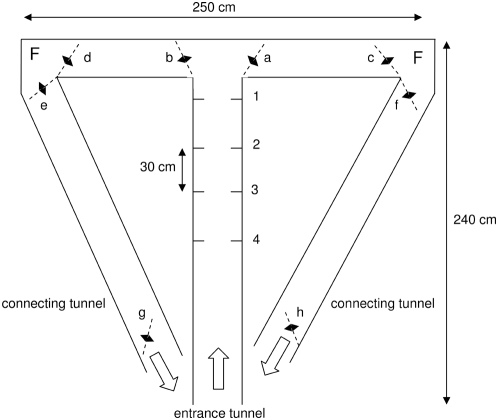Figure 1. Bees approached the continuous T-maze from the hive at a distance of 35 m, entered it via the entrance tunnel, and proceeded through the entrance tunnel toward the T-junction after passing the 4 positions (1–4) of the color signals (either blue, B or yellow, Y).
During training revolving doors (a–h) first guided the bees to enter the arm which provided food reward (F) at the end of the respective side arm, and, after sucking to completion, back out of the maze via the respective connecting tunnel. The bottom and walls of the tunnels were covered with a random black-and-white pattern, the structures of which appeared at a visual angle of approximately 10° when the bee flew in the middle of the tunnel. The top of the tunnel was made of UV-transmitting plexiglass. The color signals were arranged inside the entrance tunnel in such a way that the bees had to fly between two identical 10 cm color stripes.

